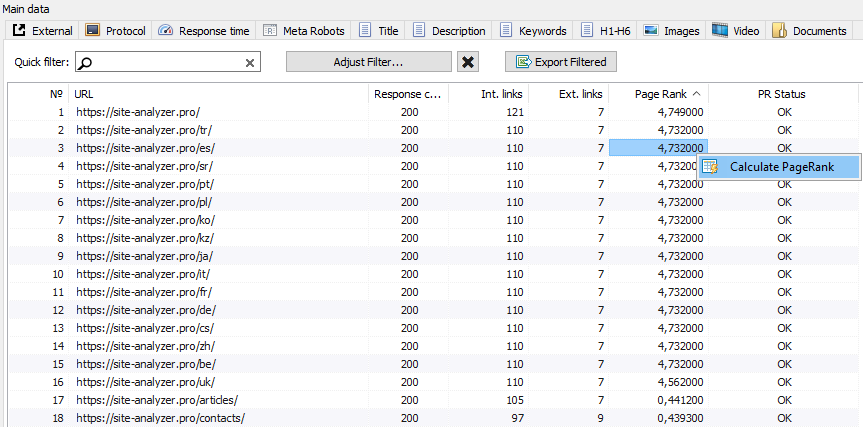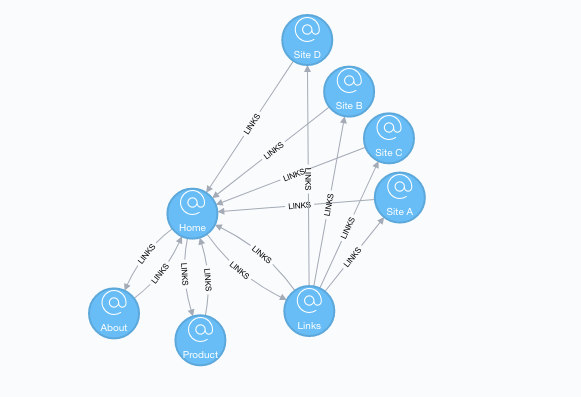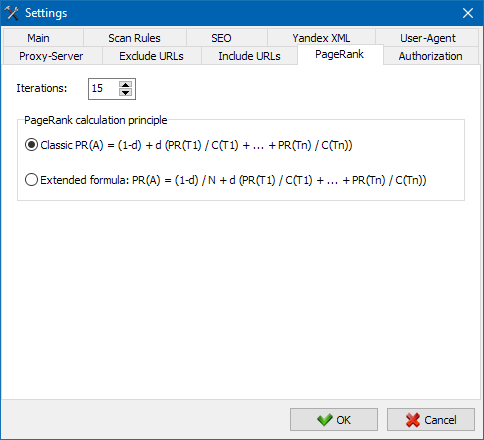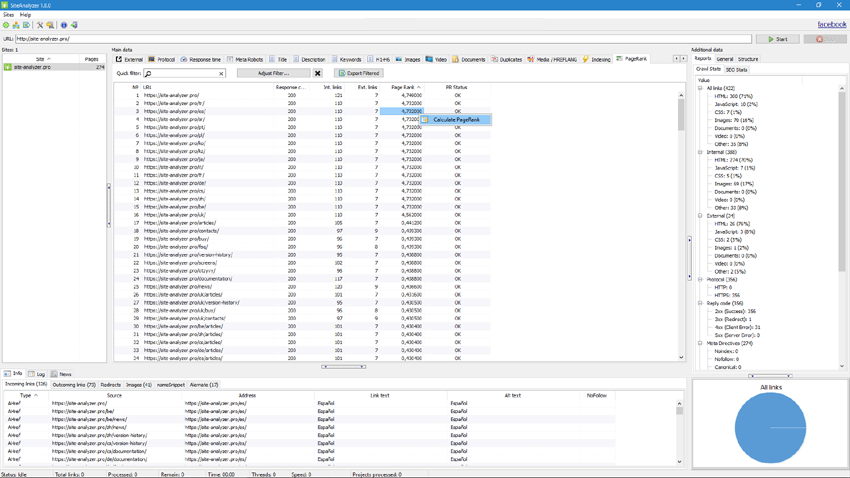
In the new version of SiteAnalyzer, we implemented the calculation of the internal PageRank of sites that you often asked for and which is available only in a few paid programs.
Today we are pleased to announce that in the new version of SiteAnalyzer 1.8, the calculation of internal PageRank is available to all users for free!

Below is a brief description of the algorithm and its application possibilities in the program when analyzing the linking of the pages of your sites.
What is PageRank and what is it for?
PageRank is a numerical measure of the page's "importance", entered by Google and dependent on the number and quality of the pages that link to it. In other words, PageRank is an algorithm for calculating page authoritativeness: the more links to a page, the more important and authoritative it is recognized.

Thus, a competent approach to building the structure of the site becomes one of the key conditions for the successful ranking of the entire resource and its individual pages. The principle of calculating the internal PageRank, outlined in this article, will help you to find out how competent in terms of search engines is the architecture of your sites.
The principle of calculating PageRank
The original algorithm for calculating PageRank was developed by the creators of Google Larry Page and Sergey Brin. The algorithm is as follows:
PR(A) = (1-d) + d (PR(T1) / C(T1) + ... + PR(Tn) / C(Tn))
where:
- PR(A) – PageRank page A
- PR(Ti) – PageRank page Ti, which refers to the page A
- C(Ti) – the number of external links of the Ti page (links that link to other sites)
- d – coefficient of the dump, lying in the interval from 0 to 1. This is a "softening" coefficient, which determines the probability that a random user visiting page Ti will follow an external link to page A (usually a random variable). According to Page and Brin's algorithm, dimming coefficient d is usually = 0.85
You can find out more about the formula:
- read here http://infolab.stanford.edu/~backrub/google.html and here http://ilpubs.stanford.edu:8090/422/1/1999-66.pdf
- as well as downloading an example of calculating PageRank in Excel at this link
It should be understood that PageRank does not classify Web sites as a whole, but is determined for each page separately. The smaller the number of external links located on the Ti pages, the more weight they have.
There is also another algorithm for calculating PageRank (more modern):
PR(A) = (1-d) / N + d (PR(T1) / C(T1) + ... + PR(Tn) / C(Tn))
- where N – is the total number of all Internet pages. This algorithm does not diverge radically from the previously proposed (1-d) / N – this is the mathematical expectation, which determines the likelihood of a user of the Ti site moving to page A
How to calculate the internal PageRank using SiteAnalyzer?
It is important to understand that Google calculates PageRank for absolutely any page on the Internet, and SiteAnalyzer calculates the weight of each page within the site. Therefore, to analyze the structure of internal links on the site, it makes sense to refer to the idea of counting PageRank and measure the relative importance of each page within a specific web resource.
First of all, to calculate the Page Rank, you must scan the site to get information about all its internal and external links.
To do this, we launch SiteAnalyzer and start scanning the site of interest to us (for example, the site of our program https://site-analyzer.pro/). The number of iterations for calculating PageRank is 15 by default, but if necessary it can be changed in the program settings (the number of iterations varies from 2 to 50, however, we consider 15 as the most appropriate for quickly obtaining the necessary result).
You can also choose one of two options for the formula for calculating PageRank, which we wrote about a little higher.

After scanning, going to the PageRank tab and running its calculation through the context menu, we get the following result:

In this example, we see that the main page of the site has the highest rank compared to other pages, which is logical and completely normal for this resource.
The obtained PageRank values are automatically saved in the program (we intentionally did not deduce the values of these intermediate iterations in order not to distract the user with unnecessary data).
Take another example, site Y. At the end of the calculation, the internal PageRank statistics looked like this:

Internal PageRank of the main page of the catalog turned out to be higher than the similar indicator for the main page of the site. This aspect does not entail negative consequences in terms of ranking, since the balance is maintained by external links to the home page of the site. However, it is important to take into account this moment and not to allow a situation when the catalog page will be higher in the results of organic output than the main page of the resource.
Conclusion
In this article, we looked at two working options for calculating PageRank in the SiteAnalyzer program, with which you can analyze the navigation structure of your websites absolutely free of charge, as well as optimize the system of internal resource links for transferring reference weight to the most important pages.
If you have any questions or suggestions on this functionality of the program, you can put them by sending us an email via the feedback form.
We thank you for your attention!
Other articles:
























 9,194
9,194



















